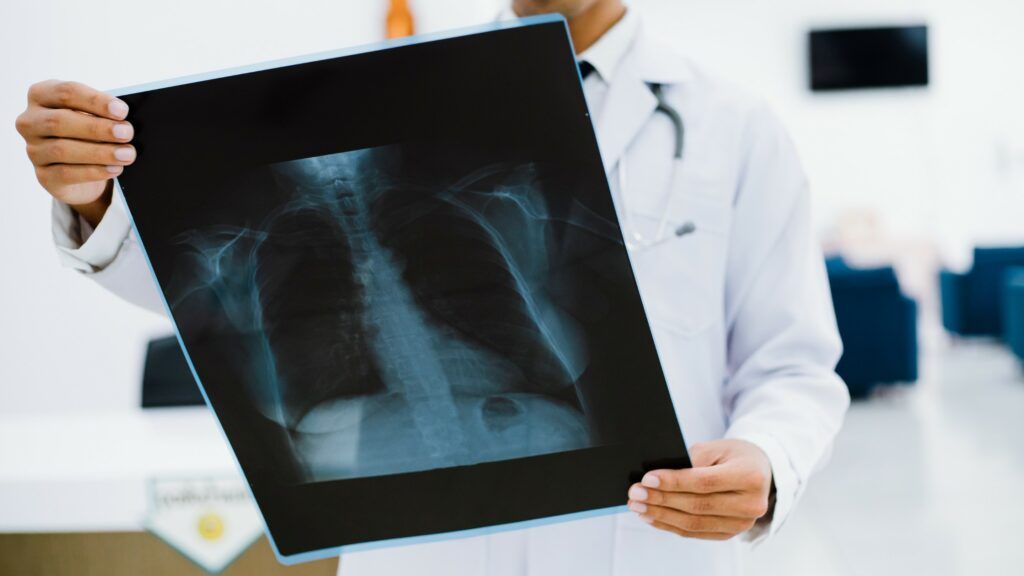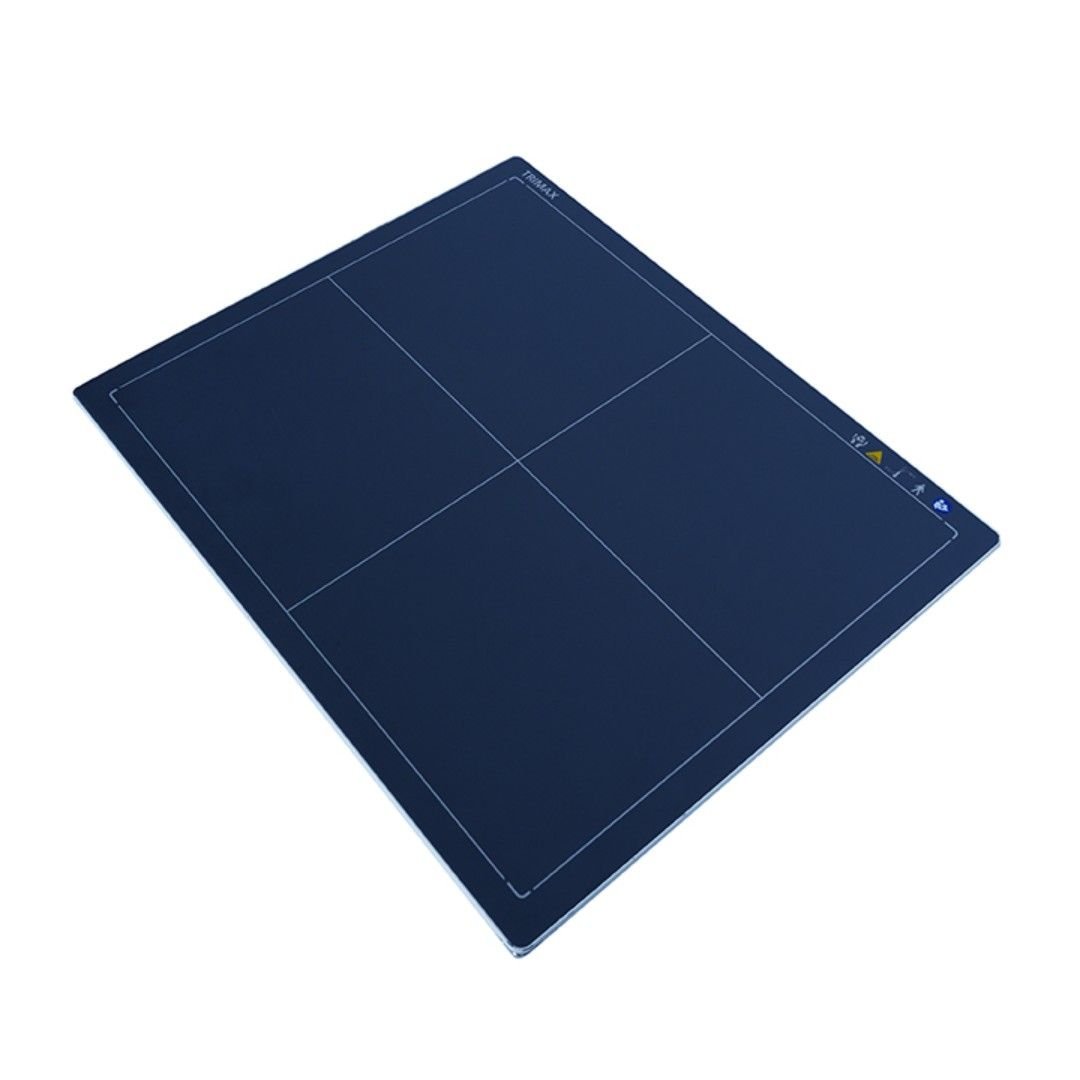We delve into the fascinating realm of Flat Panel X-Ray Detectors (FPXD). As a game-changing technology in medical imaging, FPXDs have revolutionized the way healthcare professionals obtain high-quality X-ray images. From their types and benefits to criteria for choosing, proper usage, and maintenance, we cover it all. Additionally, we explore the latest advancements and innovations in FPXD technology. So, let’s dive in!
Types of Flat Panel X-Ray Detectors
- Direct Conversion FPXDs : Direct conversion FPXDs utilize a semiconductor material, such as amorphous selenium (a-Se), to directly convert X-rays into electrical signals. This results in excellent image quality, high resolution, and wide dynamic range.
- Indirect Conversion FPXDs: Indirect conversion FPXDs use scintillator materials, like cesium iodide (CsI), to convert X-rays into visible light, which is then detected by a photosensitive array. These detectors maintain high sensitivity, and some models offer improved dose efficiency.
Benefits of Flat Panel X-Ray Detectors
- Superior Image Quality: FPXDs offer exceptional image quality with high resolution, enhanced contrast, and superior tissue differentiation. This enables healthcare professionals to make accurate diagnoses and treatment decisions.
- Real-Time Imaging: FPXDs provide real-time imaging capabilities, allowing medical practitioners to view X-ray images instantly. This feature is particularly beneficial during surgical procedures, where real-time feedback is crucial.
- Dose Reduction: Compared to traditional X-ray film systems, FPXDs require lower radiation doses to produce high-quality images. This helps minimize patient radiation exposure without compromising diagnostic accuracy.
- Faster Workflow: With rapid image acquisition and digital storage, FPXDs streamline workflow processes, leading to faster diagnoses, improved patient throughput, and enhanced overall efficiency.
Criteria for Choosing the Right Flat Panel X-Ray Detector
- Resolution and Image Quality: Consider detectors with high spatial resolution and excellent image quality to ensure accurate diagnoses and detailed visualization.
- Sensor Size: Choose an appropriate sensor size that caters to your specific imaging needs. Smaller detectors are suitable for extremity imaging, while larger ones are ideal for capturing full-body images.
- Dose Efficiency: Opt for detectors that provide optimal dose efficiency, minimizing radiation exposure while maintaining image quality.
- Integration and Connectivity: Look for compatibility with existing X-ray machines, seamless integration into your workflow, and connectivity options such as DICOM for easy image transfer and storage.
How to Use Flat Panel X-Ray Detectors
- Positioning and Patient Preparation: Ensure proper patient positioning and follow standard imaging protocols to obtain consistent and high-quality images.
- System Calibration: Regularly calibrate the FPXD system to maintain accurate and reliable image acquisition.
- Image Acquisition Software: Familiarize yourself with the image acquisition software and its features to optimize image processing and manipulation.
Maintenance of Flat Panel X-Ray Detectors
- Regular Cleaning: Follow manufacturer guidelines for cleaning and disinfection to maintain optimal performance and hygiene.
- Quality Assurance: Implement regular quality assurance procedures, including image quality checks and performance testing, to ensure accurate and reliable results.
Innovations and New Technologies in Flat Panel X-Ray Detectors
- Quantum Noise Reduction: Some FPXDs employ advanced noise reduction algorithms to enhance image quality and reduce artifacts, resulting in clearer and more precise diagnostic images.
- Wireless Connectivity: The integration of wireless connectivity allows for seamless data transfer, remote monitoring, and streamlined workflow management.
- Dose Monitoring and Optimization: Cutting-edge FPXDs incorporate dose monitoring features that provide real-time feedback on patient radiation exposure, facilitating dose optimization and patient safety.
Wireless Connectivity Capabilities of FPXDs
The wireless connectivity capabilities of Flat Panel X-Ray Detectors (FPXDs) have been a game-changer for workflow management in medical imaging. As you may know, FPXDs allow for real-time imaging and digital storage of X-ray images, which streamlines workflow processes and speeds up diagnosis and treatment times. But the integration of wireless connectivity takes these benefits to a whole new level.
With wireless connectivity, FPXDs can be networked with other devices, such as computers, tablets, and smartphones, allowing real-time data transfer, remote monitoring, and streamlined workflow management. For instance, once an image is obtained, it can be wirelessly transmitted to a computer or mobile device for further processing and analysis. This eliminates the need for physical storage and handling of X-ray film, which can be cumbersome, time-consuming, and prone to loss or damage.
Moreover, medical practitioners can view, annotate, and share X-ray images in real-time, regardless of their location. This is particularly useful for telemedicine and collaborative patient care, as it enables medical professionals to consult with one another and make informed treatment decisions without physically being in the same location.
But perhaps the most significant impact of wireless connectivity on workflow management is the ability to manage multiple FPXD systems simultaneously. With a centralized management system, healthcare providers can monitor and control multiple FPXD systems from a single location, ensuring consistent image quality and efficient use of resources.
In summary, the wireless connectivity capabilities of FPXDs have transformed workflow management in medical imaging, leading to faster diagnosis and treatment times, improved patient outcomes, and enhanced overall efficiency. The integration of wireless connectivity is just one example of the continued advancements and innovations in medical imaging, and we can expect further breakthroughs in this field in the years to come.
Leading manufacturer of Flat Panel X-Ray Detector
Edusoft Healthcare Pvt. Ltd.
Introducing TRIMAX Digital Radiography by Edusoft Healthcare Pvt Ltd, a revolutionary solution designed to revolutionize imaging capabilities for small hospitals, clinics, and private practices. Upgrade to full digital X-ray with ease, enhancing workflow efficiency, productivity, and patient care standards. Powered by the advanced Image Suite Software, our highly economical 35C Detector delivers wireless operation and superior image quality, seamlessly integrating into existing analog equipment while safeguarding your current investment.
Say goodbye to the cumbersome processes associated with film and Computed Radiography. The 35C Detector with Image Suite V4 Software eliminates the need for noxious chemicals, darkrooms, and consumables, streamlining workflow and reducing operational burdens. With wireless operation and automatic image capture, this solution enhances efficiency while remaining budget-friendly for practices of all sizes, including orthopaedics, chiropractic, and veterinary specialties.
Featuring a 35×43 size with Cesium Iodide scintillator, the 35C Detector ensures low-dose applications, prioritizing patient safety without compromising image quality. Its wireless design minimizes infection risks and trip hazards, while the Beam Detect Mode eliminates the need for cable connections, enhancing safety and convenience. With automated workflow and uniform protocols, image processing becomes efficient and error-free, enhancing diagnostic accuracy.
TRIMAX Digital Radiography offers advanced image processing and robust functionality tailored for smaller facilities. The intuitive Image Suite software platform ensures easy operation, while compatibility with Windows 10 Platform enhances cybersecurity for data protection. Optional Mini-PACS module and backup options to CDs and USB drives provide comprehensive image management and reliable offline storage, ensuring accessibility and security of patient data.
Conclusion
The advent of Flat Panel X-Ray Detectors has brought unprecedented advancements to the field of medical imaging. With superior image quality, real-time imaging capabilities, and dose reduction benefits, FPXDs have revolutionized the way healthcare professionals diagnose and treat patients. By considering the criteria for choosing, implementing proper usage, and maintaining these devices, healthcare providers can unlock the full potential of FPXD technology. Stay ahead of the curve and embrace the latest innovations in this dynamic and ever-evolving field.



